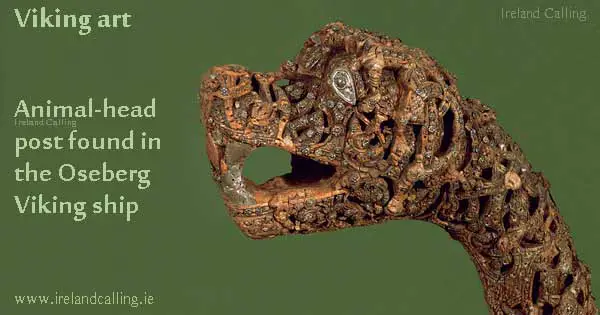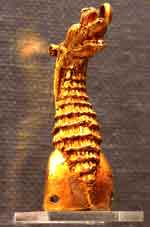The Viking Raids on Ireland from the end of the 8th century up until around 850 saw most of the principle monasteries being attacked and pillaged along with the dwellings of common people.
The monasteries were the richest source of goods and slaves which were transported back to Scandinavia to be sold. In the process of this, most of the beautiful Illuminated manuscripts were burned, having little monetary value to the Vikings.
In 950, after a long period of raiding, pillaging and slaughter, a terrifying time for the Irish people, the Vikings eventually settled in the country and established towns such as Dublin, Cork and Waterford, changing the face of Ireland forever.
Irish Art
Roman Influence on Irish art
Irish art revival from 19th century
Celtic and Viking art began to fuse
There they developed as traders and it is from around this time that we can see the Celtic and Viking styles combining in Irish Art.
Both cultures were incredibly skilful and artistic and despite the turbulence caused by Viking invasion, Irish Art thrived in the form of metalwork, stone carvings, architecture and manuscripts.
The Vikings adopted Christianity towards the end of the 10th Century which helped fuse the two Cultures further.
Trade relationships with the East brought in new materials to work with such as silver, gold, glass, amber and precious stones which added to the wealth of new Irish Art.

Normans and Ireland’s cultural abyss

Art continued to flourish in Ireland until the end of the 12th century when, Diarmait Mac Murchada, the ousted King of Leinster, made a request to the neighbouring Normans for help regaining his kingdom.
This then led to the Norman invasion of Ireland and along with it, 500 years of cultural abyss.
While Europe was experiencing the Renaissance, Ireland experienced isolation and cultural suppression brought on by the Anglo-Normans and maintained by the British Crown.
Irish Art
Roman Influence on Irish art
Irish art revival from 19th century
